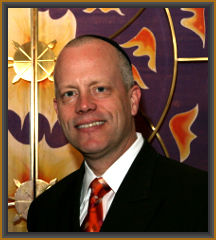
 |
July 12, 2024 - 6 Tamuz 5784 Parasha Chukkat: Striving With God
I hope this correspondence finds you doing well and enjoying a summer of rejuvenation and relaxation. After a productive few weeks of meeting guest Rabbis, I look forward to returning to the Bima, this Shabbat, to greet you personally, share joyful prayer, engage in Torah learning, and catch-up in person. This Saturday morning, our Shabbat services will commence at 10:00 am in our beautiful sanctuary and be followed by a festive Kiddush luncheon. As always, the service will be available on our regular Zoom prayer link. As we weave our way through Sefer Bemidbar, the fourth book of the Torah, this Shabbat we find ourselves entrenched in the portion of Chukkat (Numbers 19:1-22:1). Arguably, the portion offers numerous notable highlights including two “mind-numbing” and “bizarre” ritual remedies of medicinal madness. These two pharmaceutical fables will, no doubt, invite speculation of pagan remnants in biblical cultic culture, mortify scientific thinkers, and cause any rationalist to cower under his/her covers. Secular humanists, studying this biblical passage, would no doubt ascribe to the Marxist philosophy of religion as nothing more than the opiate of the masses! The first of the two events hinted at above is the strange ritual of the offering of the red heifer (Bem.19:1-22). At the beginning of this week’s portion, we learn that someone who is deemed ritually impure (via contact with the dead) becomes ritually purified through the sprinkling of cremains from a slaughtered cow upon their head. This is to say that contact with the deceased is remedied through contact with ashes of the dead. The second saga (Bem. 20:7-11) finds the Children of Israel again complaining to Hashem that they would have been better off remaining in Egypt. In reaction, the angered deity brings a plague in the guise of a biting snake. Ironically, simply staring at a hand-crafted molding of a bronze serpent, set upon a pole in the middle of the encampment, brings immediate healing to the afflicted. Furthermore, in the original Hebrew, there is a fanciful wordplay between the terms for snake, bite, and bronze, such that one modern commentator, Rabbi Kasher of the Hadar institute, suggests that there is probably no more playful instance of wordplay in all the Torah than the “Nehash ha-Nehoshet,” the copper snake described in Parashat Chukkat. With its string of repeated consonants, it sounds like it could be another of Dr Seuss’ whimsical creations, living in the same strange zoo as The Cat in the Hat, Yertle the Turtle, and the Fox in Socks. This Shabbat, perhaps we can attempt to make sense of these strange rituals, and believe me, you are invited to bring your own explanations. After all, we are a collaborative community! (And, our discussions will only become more bizarre next week when we try to make meaning of the Talking Donkey of Parashat Balak!) Despite these potential foci, it is arguable that the most infamous section of this week’s portion, and the dilemma which draws most theological scrutiny, is the recounting of the sin of Moshe and Aaron, who strike, instead of speaking to, the rock in order to bring water to the people. This “egregious” sin results in Hashem cruelly punishing his faithful and long-time servant, Moshe, by prohibiting Moshe from entering the Promised Land. (Thanks for your forty years of service, but what have you done for me lately?!?) Commentators throughout the generations have struggled with the exact nature of Moshe’s sin. Rambam, the famous 12th century sage, goes as far as to say, “The matter is a great secret of the mysteries of the Torah.” For your consideration, here is a historical overview of rabbinic explanations of the nature of Moshe’s offense: Rashi, the 11th century French commentator, sees this as simply the sin of not explicitly following Divine command. If Hashem says stand on your head, we stand on our heads. If Hashem says to speak to the rock, then we speak to the rock. Rambam, the 12th century Spanish commentator, states that Moshe sinned in becoming angry with the people. He excoriated the complaining masses by referring to them as rebels (v.10), which they perceived as God, not Moshe, being angered by their behavior. Thus, Moshe casts dispersion upon Hashem’s compassionate nature. Rav Chananel, an 11th century Tunisian Talmudist, offers that the sin of Moshe and Aaron was in using the phrase, “Shall we bring forth water.” In failing to attribute the impending miracle to Hashem’s majesty, Moshe and Aaron fell short in their potential opportunity to sanctify God’s name as the Master of Miracles. Finally, Midrash Tanchuma, an 8th century anonymous Midrashic compilation, suggests that Moshe and Aaron were already skating on thin ice due to previous missteps. Aaron formed the Golden Calf (Ex. 34), and Moshe dispatched unworthy spies, who returned an unfavorable report regarding the Holy Land, resulting in forty years of wandering. The joint failure to follow Hashem’s specific instructions was simply the straw that broke the camel’s back. As we step back and consider both these strange rituals of purification and seemingly disproportionate punishments of our leaders, we are likely left feeling puzzled and bewildered. Perhaps, it is informative to invoke the meaning of the word Yisrael, which indicates our spiritual status of sometimes being left “striving with God.” Sometimes, we don’t know Divine purpose. Sometimes, we don’t comprehend Divine retribution. Sometimes, we are limited in discerning Divine command. As we enter Shabbat and experience the world’s glory and challenges, let us continue to strive with Hashem and Torah texts. Let us double down in partnership with both God and community on our own work of discernment, holiness, and clarity, to bring about ultimate peace, redemption, and joy. Shabbat Shalom Rabbi Eric L. Wasser, EdD, Hon DM.
|